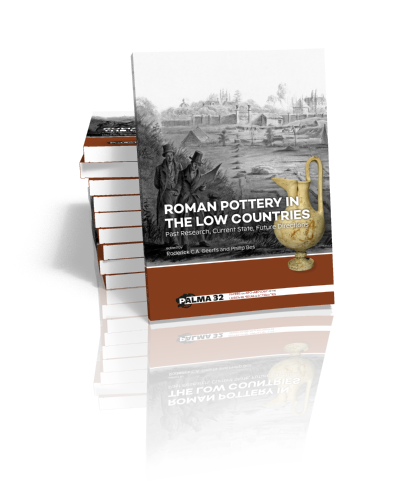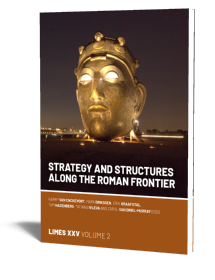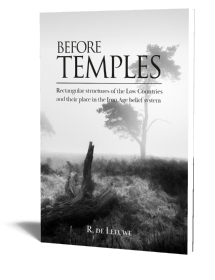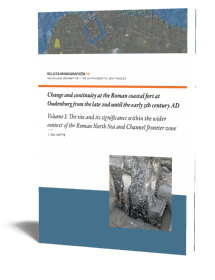Abstract:
This edited volume was written on the occasion of the 33rd Congress of the Rei Cretariæ Romanæ Fautores (www.fautores.org), which was held in September 2024 in Leiden, and offers a status quaestionis of Roman pottery studies in the Netherlands and adjacent regions. A concise history introducing the discipline is followed by ten contributions – centred around four concepts – which are written by experts in their respective fields who discuss key aspects of Roman pottery studies. Many of the contributions are characterised by a diachronic viewpoint, and range from addressing the social and cultural significance of individual ceramic categories, to formative historical developments and regional syntheses. The book concludes by highlighting prospects for future research.
The book is packed with detailed information on Roman pottery and focuses on fellow specialists, and rather is not an introduction on the study of Roman pottery. However, readers interested in learning how the study of pottery contributes to our understanding of Roman ways of life and the Roman presence in the Netherlands and surrounding regions can certainly find aspects to their linking.
This publication will be presented at the 33rd Congress of the Rei Cretariæ Romanæ Fautores, in Leiden.
Contents
Introduction
Roderick C.A. Geerts and Philip Bes
Roman Pottery and the Dutch National Museum of Antiquities: a Long-Term Relationship
Jasper de Bruin
From the Iron Age to the Roman Period. Native Pottery in the Batavian Area
Peter W. van den Broeke
Meanwhile, in the North… Handmade Pottery beyond the Roman Frontier
Ernst Taayke
A Cherished Material. Terra Sigillata from the Province of Groningen
Annet Nieuwhof
Ceramics in the Urban Sphere: the Social Strata of their Users
Bernd Liesen
Augustan Military Pottery Assemblages on the Hunerberg in Nijmegen
Harry van Enckevort
Pottery from Rural Settlements in the Civitas Cananefatium
Roderick C.A. Geerts
Developments in Funerary Pottery between Rhine and Meuse (1st-3rd century)
W. Frederique Reigersman-van Lidth de Jeude
Gallo-Belgic Ware from Xanten to the Sea
Xavier Deru
Roman Amphorae on the Limes
Joost J.H. van den Berg
Conclusion and Outlook
Roderick C.A. Geerts and Philip Bes


Roderick C.A. Geerts
MA
Pottery and the Roman period are central to Roderick’s career. It started during his education at Leiden University and developed until pottery became a focal point in his research. After his graduation from Leiden University in 2009 he worked at Archeologie Delft (2005-2009) and subsequently started in 2010 at ADC ArcheoProjecten, where he is still employed. His current employment within Dutch development-led archaeology as a field director, senior KNA archaeologist and senior KNA specialist material culture provides ample opportunity to broaden his vision on all facets of Dutch archaeology, thereby focusing on the Roman period, Iron Age and Roman-period pottery as well as Second World War archaeology. He was one of the authors of the KNA Leidraad Romeins aardewerk (Guidelines on the study of Roman pottery).
read more


Dr.
Philip Bes
Philip Bes is a ceramic specialist who studied Classical Archaeology at Leiden University (1998-2003), followed by doctoral research (2004-2007) at the University of Leuven (Belgium), where he researched the distribution of terra sigillata and red slip ware in the Roman Eastern Mediterranean. Two years of postdoctoral research (2008-2009) also in Leuven were dedicated to ceramic studies within the Sagalassos Project. From January 2010 until November 2021 he worked on an independent (freelance) basis, and while continuing his long-term involvement with the Boeotia Survey (Greece) and the Sagalassos Project (Turkey), this also allowed him to become involved as either consultant or staff member in a number of smaller and larger survey and excavation projects in Greece (e.g. Megara, Skyros, Kenchreai), Turkey (e.g. Ephesos, Limyra, Patara, Pergamon), Israel (Caesarea Maritima, Horvat Kur) and Cyprus (Hala Sultan Tekke). From December 2021 until November 2023 he held a two-year Lise Meitner postdoctoral scholarship at the Austrian Archaeological Institute in Vienna, in order to study and publish the Roman to Early Byzantine pottery from the recent excavations in Limyra.
read more













